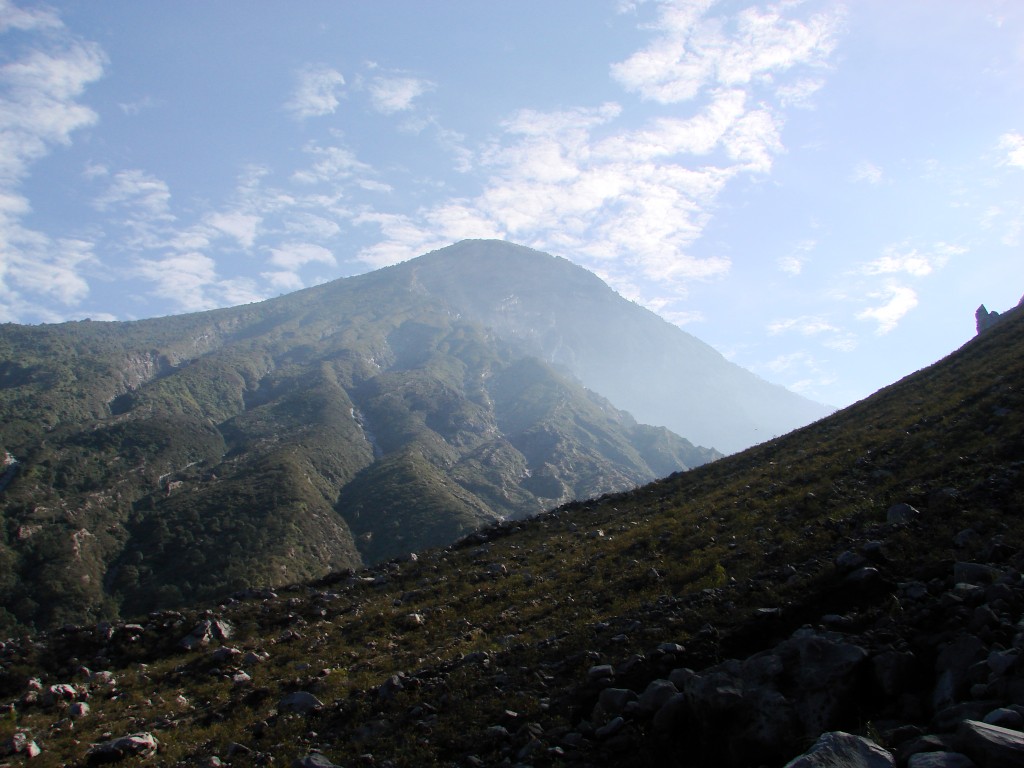22 April 2013
Remembering to be small: Accretionary Wedge #56
Posted by Jessica Ball
As geologists, we spend a lot of time looking for the big picture. We want to know how a mountain range formed, or where tectonic plates were millions of years ago, or what global repercussions an eruption could have, or what effect the melting of an ice sheet could have on sea level around the world. We think about time in boggling spans that far exceed anything we could experience in a single lifetime – millions, even billions of years. And we are always trying to tell far-reaching stories to explain the history of our planet, using words and figures and photos. It’s amazing when you can look at a photo and pick out a feature like a fossil and say something about the climate and habitat and food chain and maybe even the tectonic setting that fossil came from. I love that bit about geology, where we can take the smallest things and tell a story with them.
Just occasionally, I find myself on the flip side of that habit: I see something that reminds me that I, too, am just a small part of a bigger story. I think the photo that best accomplishes this for me is one I took on my last trip to Guatemala, where I was doing fieldwork on the Santiaguito lava dome complex.
This shot was taken from the lower slopes of one of the domes, early in the morning. It’s not the best framing or the clearest, but it tells a very clear story to me – and it reminds me, always, of just how small I really am compared to what I study.
In the foreground is the slope of a lava dome. The ground looks generally navigable until you realize that the boulders are person, car and even house-sized. Beyond the dome is the Santa Maria volcano, over 12,000 feet high. On the flanks to the left are deeply incised drainage channels, showing off the layers of pyroclastic material and lava flows laid down in dozens of eruptions over thousands of years; to the right is the haze-filled crater blasted out by the 1902 eruption, which was the second-largest in the 20th century. The crater is filled with haze from rising mist and perhaps a little ash that just erupted from the Caliente dome.
My first thoughts, whenever I see this photo, are always about the geologic features. And my second thought is usually something along the lines of “gee, that perspective always looks wonky”. But my final thought is always the realization that the perspective was wonky because I was standing at the bottom of a truly massive volcano, and an only slightly-smaller lava dome. Compared to this mountain in front of me – and even the smaller one I was standing on – I was little more significant than one of the boulders around me. The volcano could erupt, or collapse, or sit there for the next thousand years doing nothing, and I would make absolutely no difference to its existence. That always hits me hard: just how big this thing really is, and how small I am, even though I’m trying to explain it. I’m small in comparison, but I can tell the story of this volcano and its lava domes.
Part of it is about humility – an excellent thing for a volcanologist to remember, considering what we study – but it’s also about recapturing the sense of awe and delight I felt at that moment. That even though I’m just a very small part of the Earth, I can still find ways to see and understand the larger forces at work in shaping it.
And with that rather introspective post, Happy Earth Day!



 Jessica Ball is a volcanologist at the U.S. Geological Survey, researching volcanic hydrothermal systems and stability, and doing science communication for the California Volcano Observatory. She previously worked at the Geological Society of America's Washington DC Policy Office, learning about the intersection of Earth science and legislative affairs. Her Mendenhall postdoc and PhD focused on how water affects the stability of volcanoes, and involved both field investigations and numerical modeling applications. Her blogging covers a range of topics, from her experiences in academic geosciences to science outreach and communication to her field and lab work in volcanology.
Jessica Ball is a volcanologist at the U.S. Geological Survey, researching volcanic hydrothermal systems and stability, and doing science communication for the California Volcano Observatory. She previously worked at the Geological Society of America's Washington DC Policy Office, learning about the intersection of Earth science and legislative affairs. Her Mendenhall postdoc and PhD focused on how water affects the stability of volcanoes, and involved both field investigations and numerical modeling applications. Her blogging covers a range of topics, from her experiences in academic geosciences to science outreach and communication to her field and lab work in volcanology.
[…] Remembering to be small: Accretionary Wedge #56 – Magma Cum Laude – AGU Blogosphere. Share this:TwitterFacebookPrintTumblrGoogle +1RedditLike this:Like Loading… Leave a Comment […]